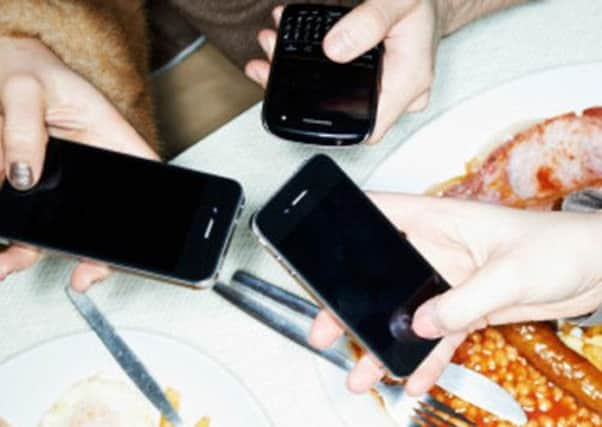New Google app splits restaurant bills


One person is left out of pocket as the rest quibble over every drink consumed, or side dish ordered, and the gathered collection of coins and notes somehow falls short of the full amount owed.
But now technology giant Google has come up with a solution to the age-old problem of splitting the bill – a mobile phone app that tracks how much is owed by different people in the group and ultimately settles the balance by transferring money online between their bank accounts.
Advertisement
Hide AdAdvertisement
Hide AdGoogle has filed a patent with the US authorities for the system, which automatically stores information about group expenses.
The company said it could be used to manage expenses during a meal out, or on a longer group event or trip.
The app, which was created by a group of six Google employees from the company’s New York office, will map what people have eaten and drunk as the meal progresses – and who has paid what proportion of the bill.
It will then arrange for those who are left out of pocket to be reimbursed by the others – all online.
“Oftentimes, people engage in activities as a group,” the application says. “For example, a group of friends may go on vacation together, plan an event together, or go to dinner.
“When the group incurs a bill, typically one of the group members will pay the bill out of convenience and expects to be paid back by the other group members.
“However, some group members may not pay back their entire share of the bill or may forget and not pay back their share at all.
“This is unfair for the group member that paid the bill. Thus, there is a need for an efficient way to track group expenditures and settle balances between group members.”
Advertisement
Hide AdAdvertisement
Hide AdRoddy Martine, an Edinburgh-based social etiquette commentator, welcomed the technology, arguing that it could resolve many a heated restaurant argument.
“A common problem now with restaurant bills is that people often want to pay their own whack – specifically what they have eaten and drunk –rather than splitting the bill,” he said.
“You will always get someone who has one course and a ginger beer, dining with people who are eating three courses and drinking multiple bottles of wine – and there is nothing worse than having a scene in a restaurant.
“I think the idea of an app to solve the problem is quite a good one, especially for people who are dining in a group who are not necessarily close friends – but only if all of the group are the types of people who have their smart phones on them at all times.
“However, it is perhaps not really in the spirit of good social interaction.”
Gadget expert Josh Welensky said using an app while out for a meal could be awkward as each person would have to input their order as the meal progressed.
“I think the biggest problem is going to be getting everyone who is going to an event to sign up to the app,” he said.
“The technology is not a barrier – this seems like the way that Google wants to go in terms of merging new ideas with its existing technology.”
Advertisement
Hide AdAdvertisement
Hide AdHe said it would be likely that the technology giant would link the expenditure app to other of its existing products, such as Google Wallet, which allows people to pay online directly through their Google account in a similar way to Paypal.
“That would make it easier,” he said. “However, it is often hard enough to get a group of six or seven people together for a meal, never mind making sure that they sign up to the same app as well.”
It is thought that the app has been produced as part of Google’s “20 per cent time”, which allows employees to take one day a week to work on their own side projects. Previous innovations which have resulted from the initiative include the company’s e-mail system Gmail.
The patent application, ‘Tracking and Managing Group Expenditures,’ was originally filed to the US Patent and Trademark Office in March 2012 and made public last week.